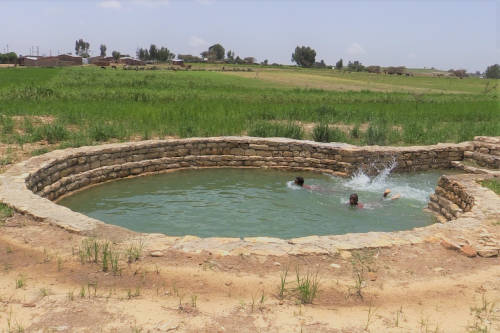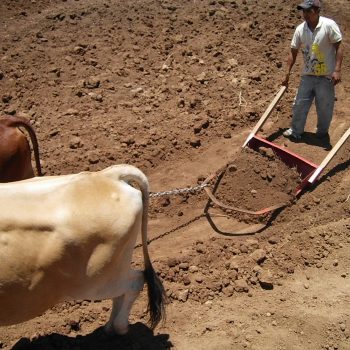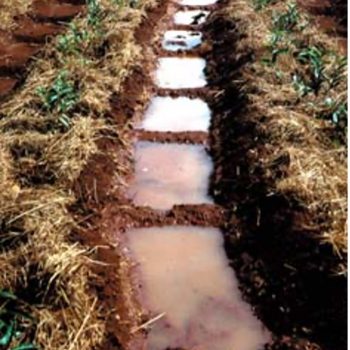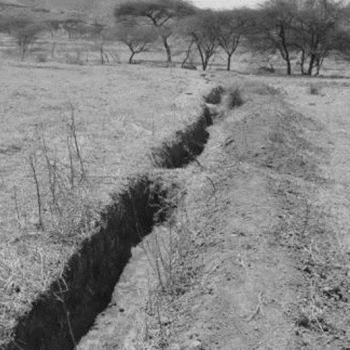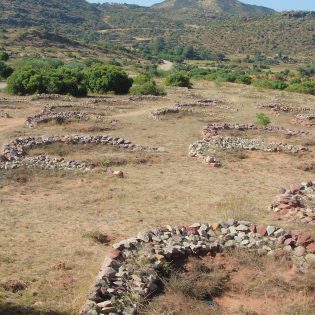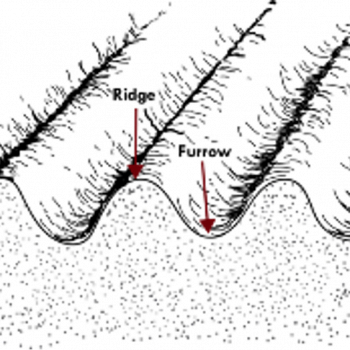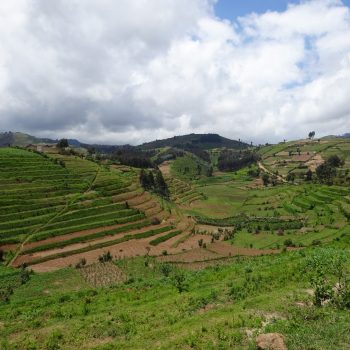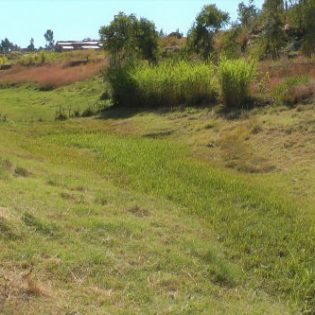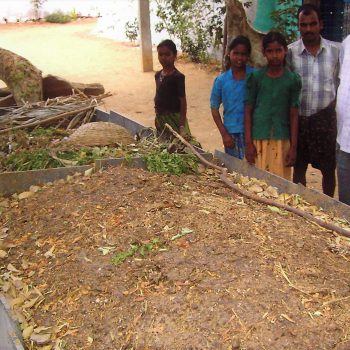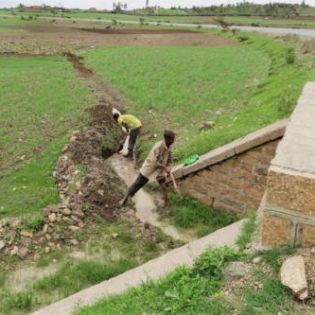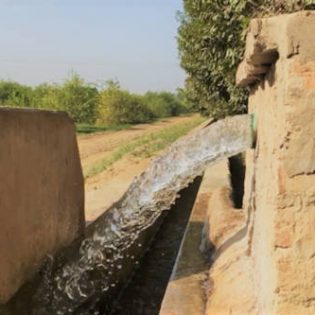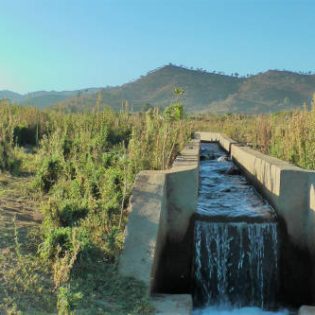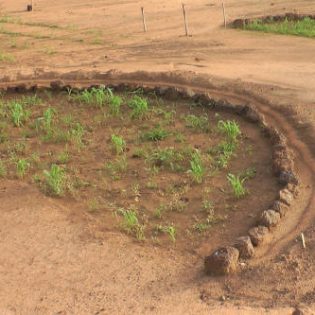There are a lot of ways in which water can be stored to provide for agricultural systems. In rainfed agriculture, the construction of ponds and mini dams can make water available during dry spells in the rainy season, and for a few months after the rains cease. In irrigated areas storage ponds can create a (irrigation system) buffer capacity and avoid night irrigation.
Surface water storages come in many different shapes, materials, and dimensions. Water may be concentrated from the surrounding sloping surfaces, or conveyed from paved surfaces (roads, paths) and channels (cut-off drains). Circular and trapezoidal ponds are the most common design, though circular ponds such as charco-dams, are considered to have the best excavation to storage ratio. In many cases ponds can be built on pre-existing depressions or for instance they can consist of a converted borrow pit or even elephant pond. To avoid seepage, if unwanted, the pond should be lined or compressed. There is wide range of material for this – plastic liners, geotextile, clay/ termite soil or ferro-cement.
Replenishing constructed ponds, natural depressions or even shallow aquifers; the water can be used to irrigate crops, provide water for livestock, and even for (certain) domestic uses. Considering the investment, in many circumstances it may be beneficial to consider multiple water needs and integrating productive with multiple domestic uses.
Surface water storage bears the disadvantages of water being lost through evaporation, which may be reduced or overcome by planting a shelterbelt in the prevailing wind direction; or in very arid areas by constructing using a roof or cover. Ponds may also harbor mosquitoes, particularly where sides have a gentle slopes a comfortable habitat is created for the larvae. And where ponds are also used as domestic source, the storage time will determine whether the quality is still suitable, it may become insufficient for drinking purposes but also for bathing and watering animals.
Surface water storages come in many different shapes, materials, and dimensions. Water may be concentrated from the surrounding sloping surfaces, or conveyed from paved surfaces (roads, paths) and channels (cut-off drains). Circular and trapezoidal ponds are the most common design, though circular ponds such as charco-dams, are considered to have the best excavation to storage ratio. In many cases ponds can be built on pre-existing depressions or for instance they can consist of a converted borrow pit or even elephant pond. To avoid seepage, if unwanted, the pond should be lined or compressed. There is wide range of material for this – plastic liners, geotextile, clay/ termite soil or ferro-cement.
Replenishing constructed ponds, natural depressions or even shallow aquifers; the water can be used to irrigate crops, provide water for livestock, and even for (certain) domestic uses. Considering the investment, in many circumstances it may be beneficial to consider multiple water needs and integrating productive with multiple domestic uses.
Surface water storage bears the disadvantages of water being lost through evaporation, which may be reduced or overcome by planting a shelterbelt in the prevailing wind direction; or in very arid areas by constructing using a roof or cover. Ponds may also harbor mosquitoes, particularly where sides have a gentle slopes a comfortable habitat is created for the larvae. And where ponds are also used as domestic source, the storage time will determine whether the quality is still suitable, it may become insufficient for drinking purposes but also for bathing and watering animals.
Additional Resources
Knoop, L., Sambalino, F., & van Steenbergen, F. (2012). Securing Water and Land in the Tana Basin: a resource book for water managers and practitioners. The Netherlands: 3R Water Secretariat. (https://metameta.nl/wp-content/uploads/2010/05/FINAL_tana_manual_digital_LQ.pdf)
Renwick, et. al, 2007, “Multiple Use Water Services for the Poor: Assessing the State of Knowledge,” Winrock International: Arlington, VA. (https://www.musgroup.net/sites/default/files/d852d750a8eafb2fb7ba1427b1c320bd.pdf)
Web resources: Global Database on Sustainable Land Management (https://www.wocat.net/en/global-slm-database/)
Additional information
| Agriculture | Flood/spate irrigated, Irrigated, Rainfed (Crop) |
|---|---|
| (semi) Natural unused areas | (semi) Natural unused areas |
